Get to Know Drill Bits: What Types Are There
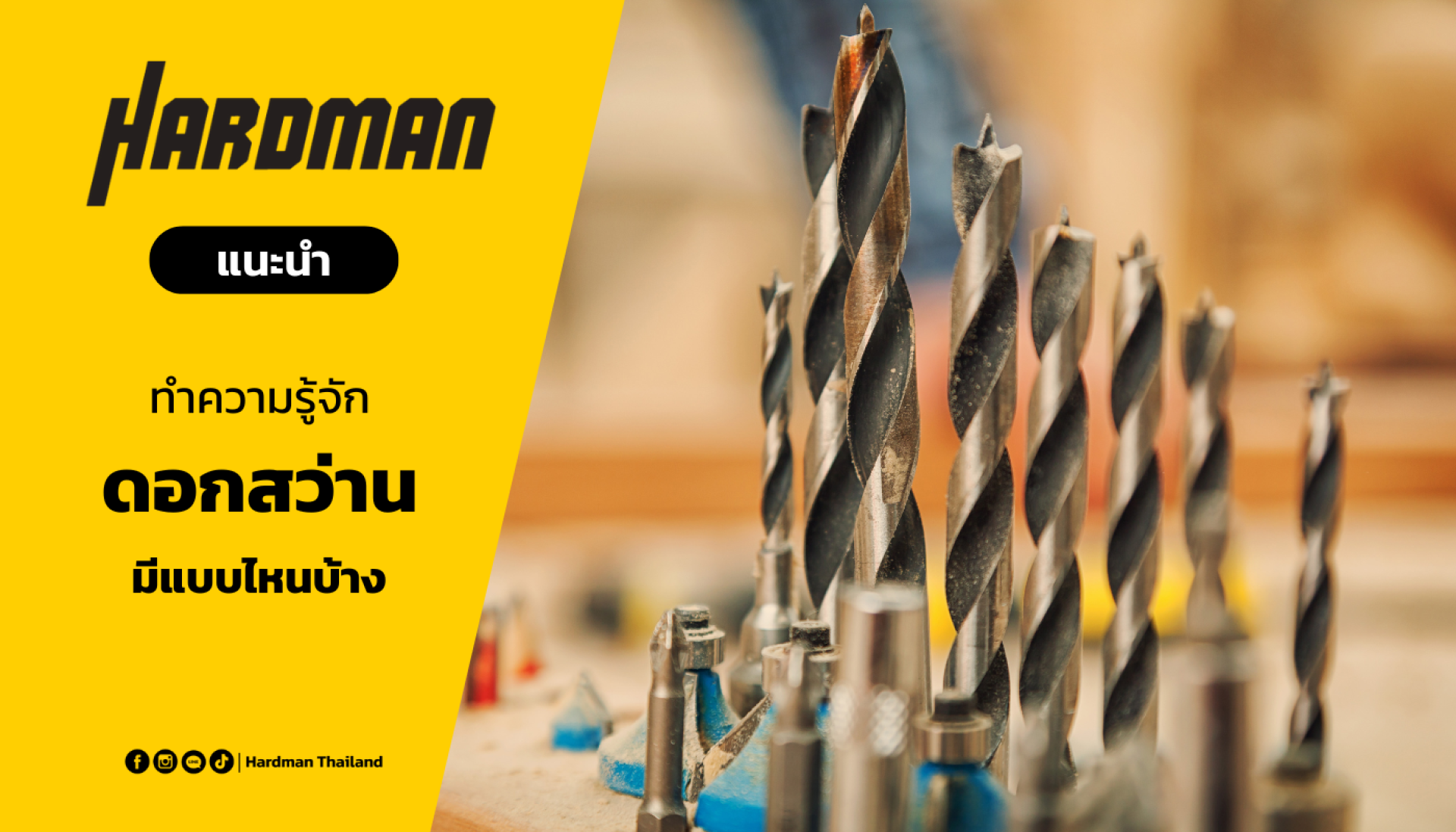
A drill bit might seem like a small item in a toolbox, but in the world of drilling, repairs, and assembly, it's truly the heart of the job. Choosing the wrong type, material, or size can lead to damaged work, inability to drill through, or even broken tools.
What is a drill bit
A drill bit is a cutting tool attached to a drill machine that creates holes or bores through various materials like wood, metal, concrete, plastic, tiles, and more. The bit typically has a spiral body (flutes) that helps cut and remove material debris from the hole. Each material requires a specialized bit because different materials have varying hardness levels. Using the wrong type of drill bit directly impacts both efficiency and safety.
Get to Know Different Types of Drill Bits
1.Wood Drill Bits
Wood drill bits are designed to ensure smooth drilling in wood, creating clean holes. They typically feature a pointed center tip (brad point) to prevent the bit from wandering and have sharp cutting edges to precisely cut through wood fibers. There are various types of wood drill bits, including
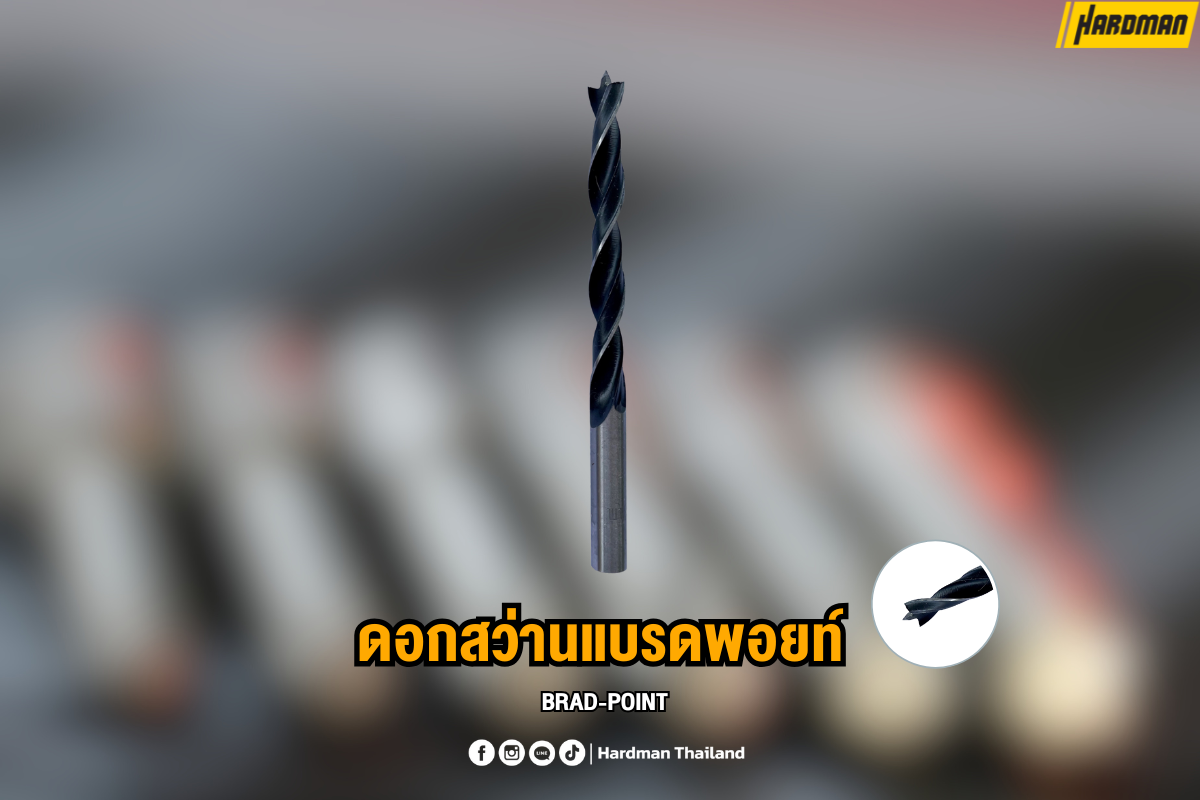
Brad-point drill bits are often referred to as pilot bits, commonly used when starting to drill holes, such as for furniture assembly. They are easily recognizable by the sharp, pointed tip in the center of the head, which precisely grips the desired drilling location and prevents slippage during drilling. To use this bit, simply place the pointed tip onto your marked spot on the wood before you begin drilling.
Additionally, the bit's body features wide flutes or channels, specially designed to efficiently remove wood chips and debris during drilling. This design also helps to widen the hole cleanly and prevents the wood around the drilled area from tearing or splintering.
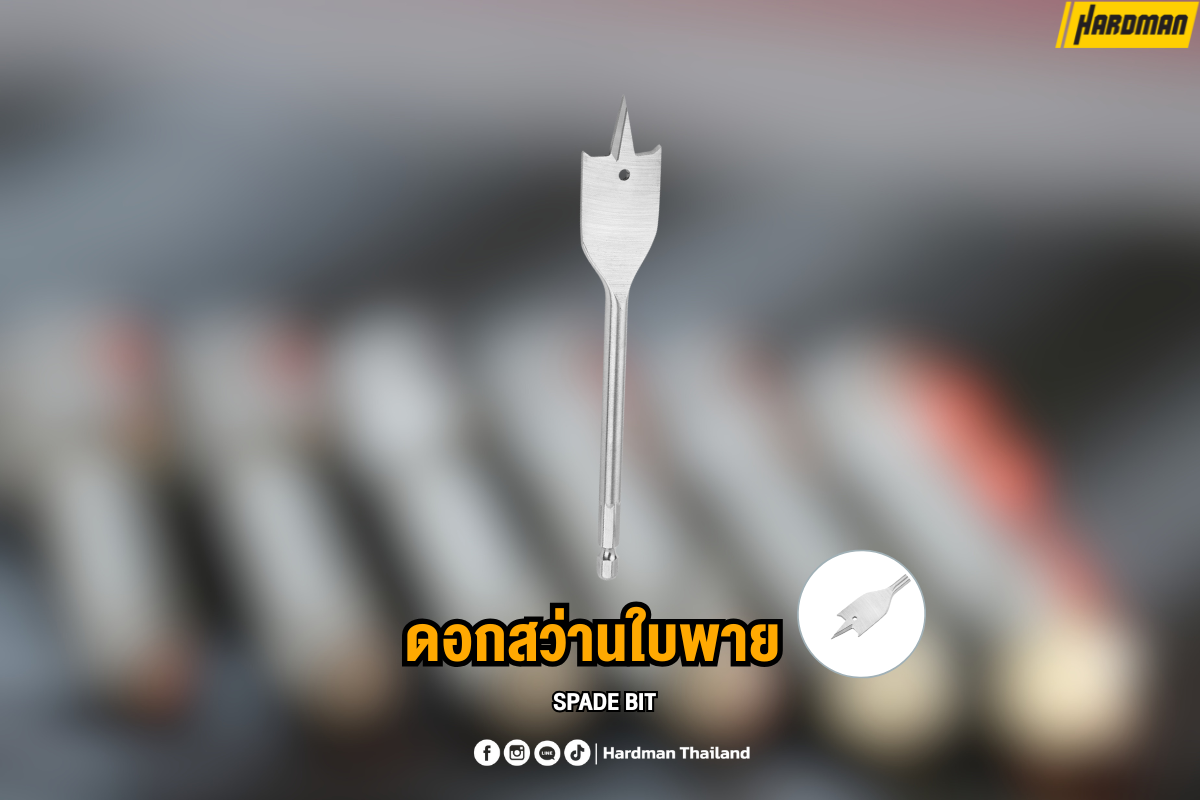
Spade Bit Spade bits have a flat, paddle-like shape with a sharp, pointed tip that helps precisely position the bit for drilling. They are commonly used for boring wide, deep holes through thick pieces of wood, allowing for clean, through-holes. The pointed tip also assists in guiding the removed wood material.
However, when using these bits, you should be mindful of potential kickback, especially when applying high drilling force. To make drilling easier, start by boring a shallow pilot hole with the spade bit. Then, use a smaller brad-point drill bit to drill additional holes around the edges of the initial shallow bore before returning to the spade bit. Spade bits are often preferred for drilling into softer woods like plywood and gypsum board, and they are popular for furniture assembly and electrical wiring installations.
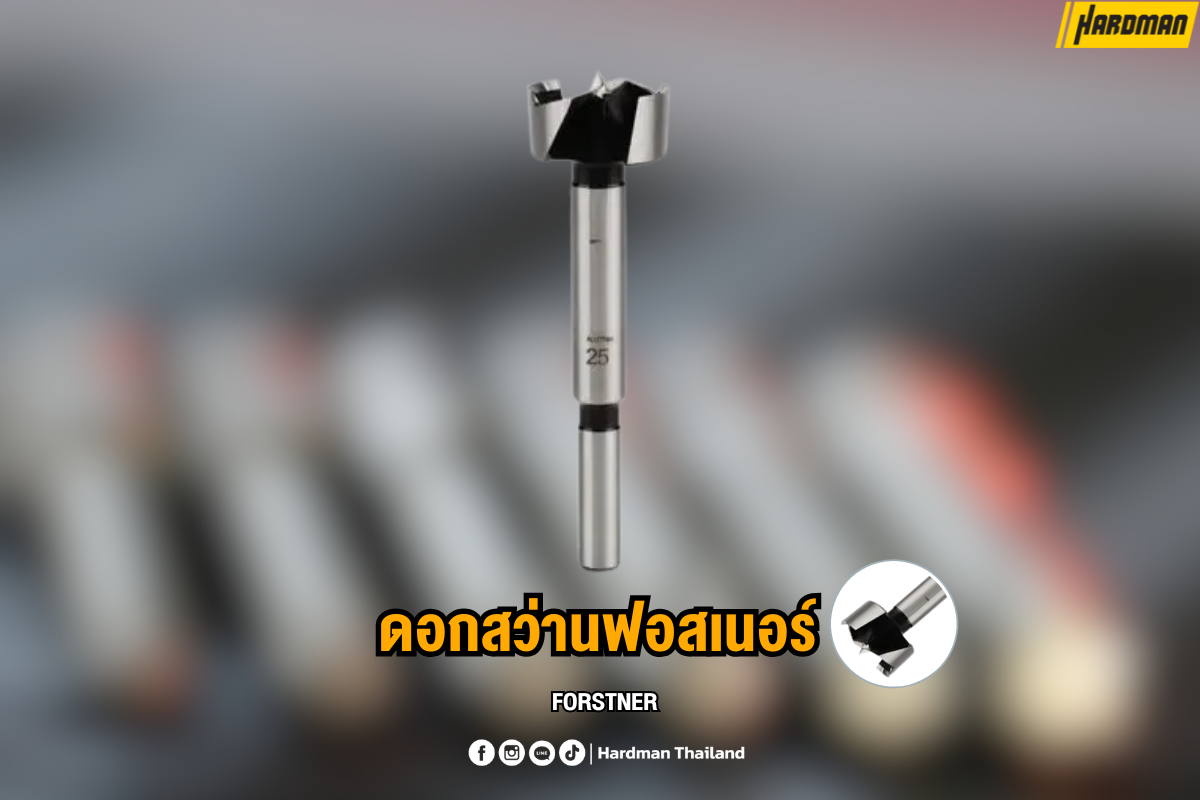
Forstner Bit A Forstner bit is characterized by its circular shape with surrounding cutting blades and a small, pointed tip in the center. This design allows for precise drilling at the desired spot, creating smooth, consistent holes. It also effectively removes dust and wood chips from the workpiece, preventing debris from obstructing the drilling process.
When drilling, Forstner bits are commonly used to create flat-bottomed, non-through holes. Examples include boring out dados, or counterboring holes before embedding nuts, screws, or bolts. It's important to use low and consistent drilling pressure to achieve smooth, clean holes and prevent marks on both the bit and the workpiece.
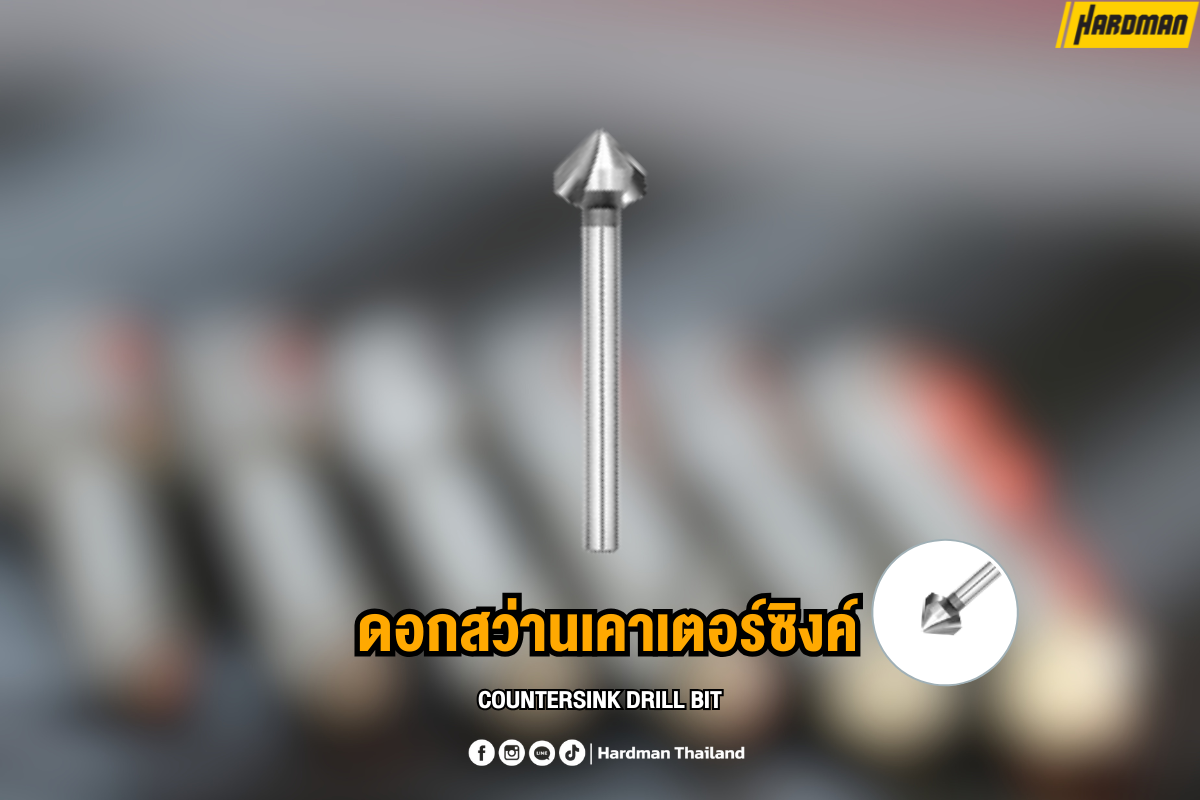
Countersink Drill Bit A countersink drill bit is used to deburr the edge of a drilled hole, removing any sharp or hazardous surfaces, or to create a pilot hole for screws and bolts. Typically, a smaller tapered countersink bit is used first to create a pilot hole, followed by a larger countersink bit to remove the sharp edges and allow the screw or bolt head to sit flush. They are commonly used in assembling various items and furniture, such as door hinges, kitchen counters, wooden chairs, and drawer cabinets.
2. Metal Drill Bits
Metal drill bits are made from strong, durable steel to effectively drill through metal, creating clean and precise holes. Most feature a continuous spiral flute along the entire body, with a pointed tip designed to prevent the bit from wandering during drilling. Their sharp cutting edges are ideal for boring or shearing through thick metal, ensuring a smooth and neat hole. These bits are suitable for drilling various types of metals, including stainless steel, alloy metals, copper, mold steel, and steel pipes. This category of drill bits is further divided into three types
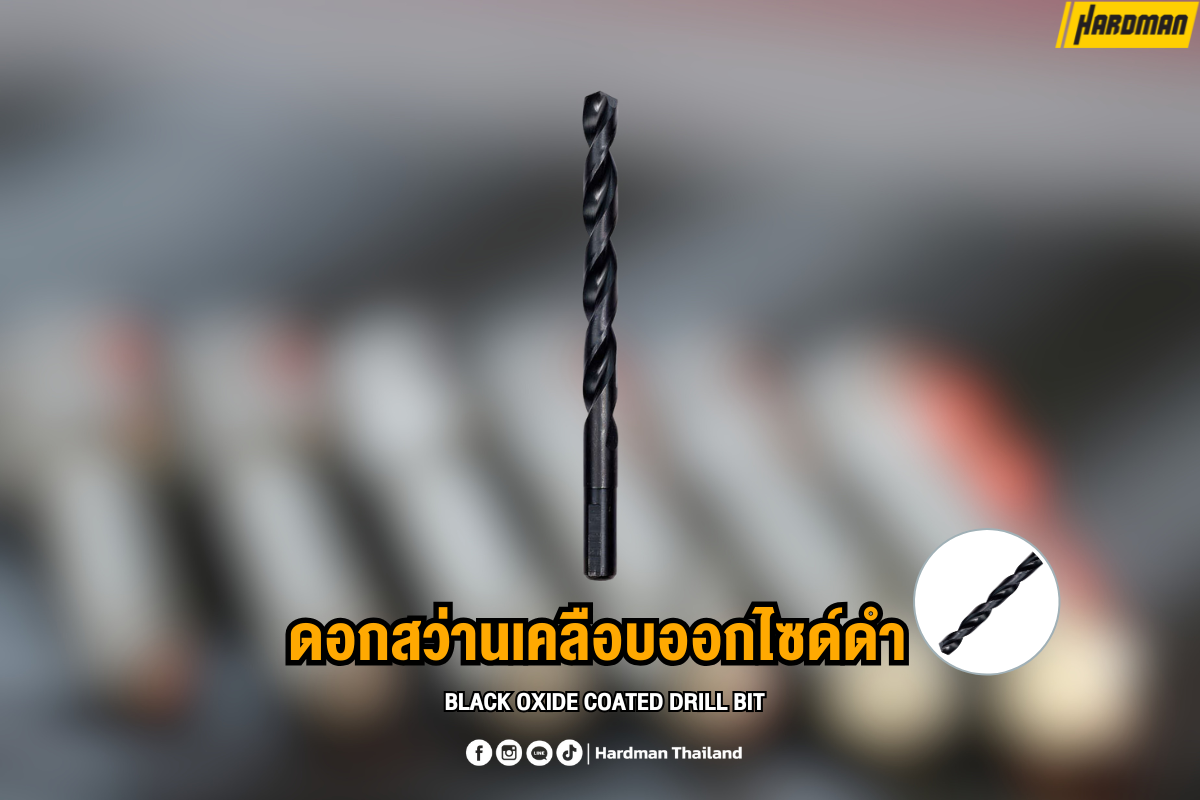
Black Oxide (BO) Coated Drill Bit are designed to absorb heat during drilling. This property helps to extend the lifespan of the drill bit, allowing for longer use.
They are suitable for drilling relatively soft, thin, or less hard metals, such as alloy sheets and stainless steel sheets. These bits are mostly used for general, everyday drilling tasks rather than heavy-duty work, for example, drilling holes in DIY projects or making metal grates.
Additionally, they can also be used for drilling wood, but similarly, only for soft and not overly thick wood.
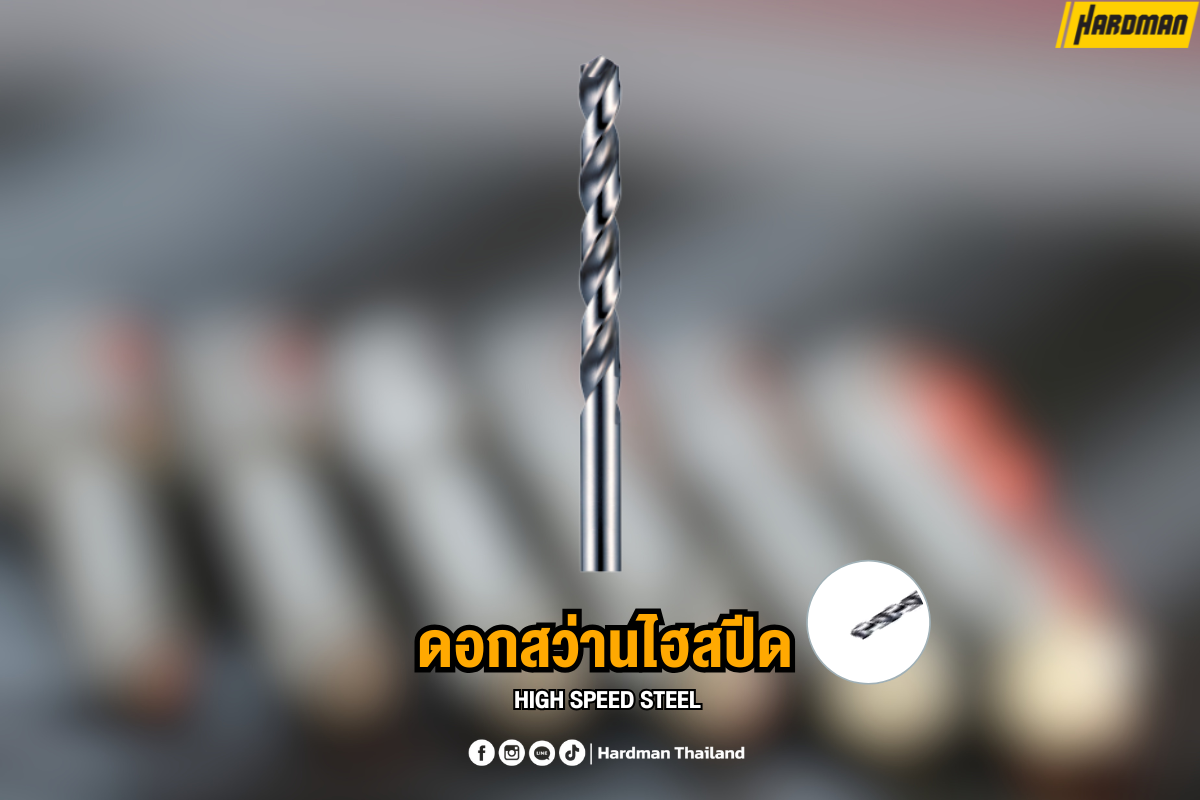
High-Speed Steel (HSS) Drill Bit are more durable than black oxide coated drill bits. They offer excellent heat resistance during use, a property that allows them to drill through materials quickly and penetrate easily.
They are suitable for drilling through various general, thick metals like cast iron, aluminum, stainless steel, and mold steel. They can also effectively drill through hardwoods. These are often considered a fundamental type of drill bit that every toolbox should have.
Furthermore, HSS drill bits can undergo various coating processes. For example, Titanium Nitride (TiN) coatings offer the benefit of excellent heat dissipation during drilling, reducing surface damage to the workpiece. Alternatively, Titanium Carbon Nitride (TiCN) coatings provide similar benefits to TiN but offer superior hardness and performance.
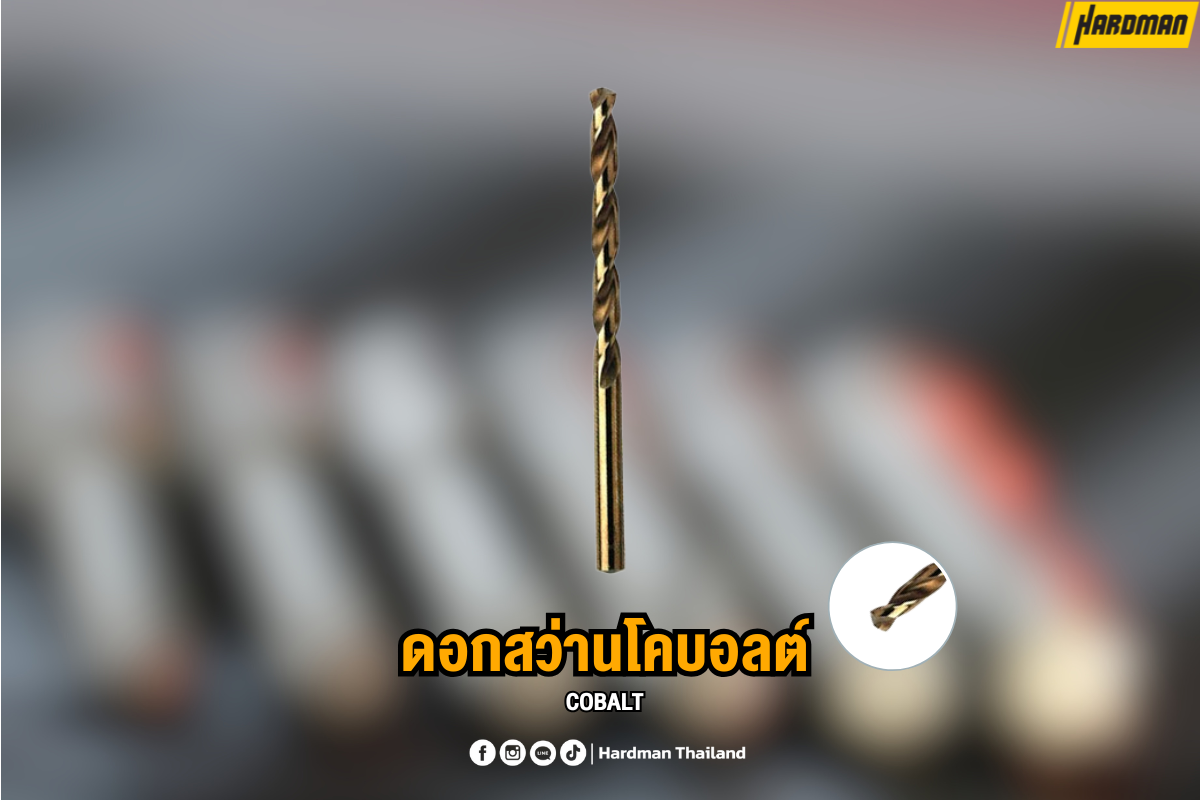
Cobalt drill bits are manufactured from a blend of steel and cobalt, with some manufacturers also adding a small amount of tungsten. They are stronger than High-Speed Steel drill bits, highly resistant to the heat generated by friction during drilling, and offer excellent wear resistance. These bits are suitable for drilling tough and hard metals such as cast iron, aluminum, stainless steel, mold steel, copper, and other difficult-to-machine alloys.
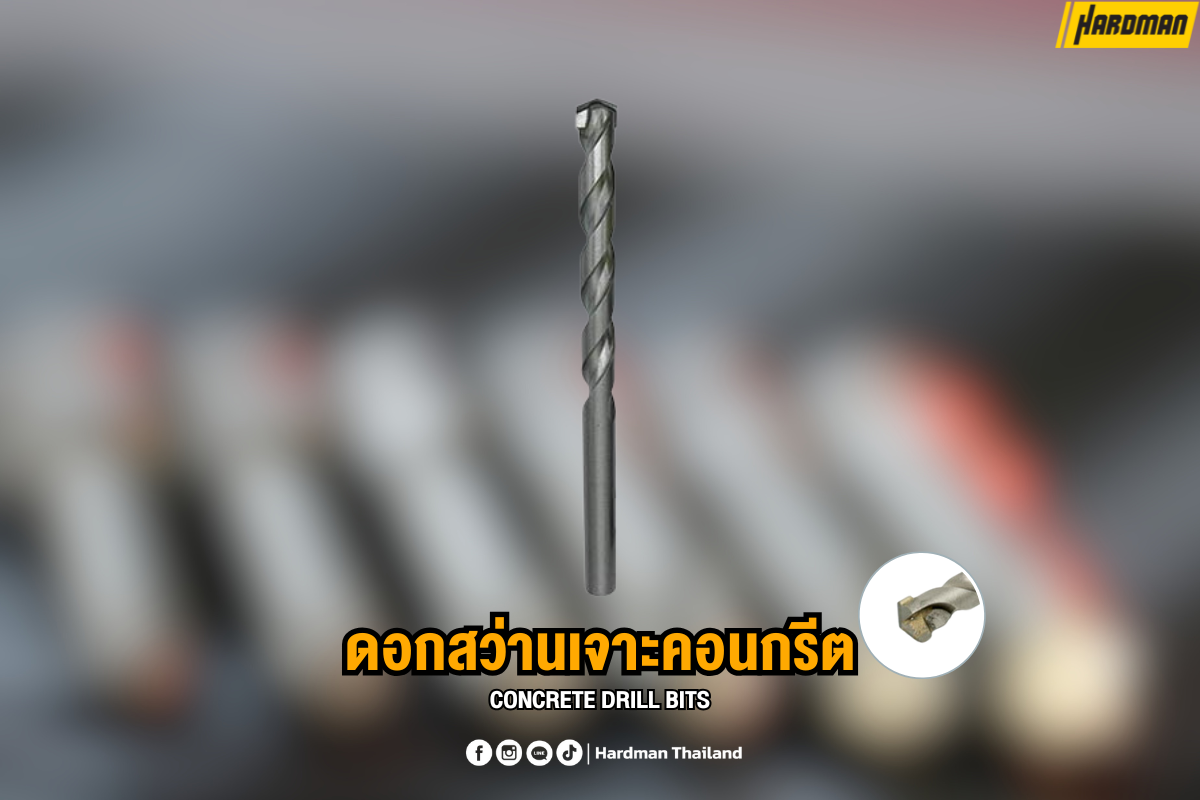
3. Concrete Drill Bits
Concrete drill bits feature a twisted metal body with a carbide-tipped, pyramid-shaped head. This carbide tip is a very hard metal designed to withstand the impact of drilling. The bit's body has relatively tight flutes to ensure that during concrete drilling, dust is not widely dispersed but rather collects as fine particles around the immediate drilling area. This design also helps to reduce friction.
These bits are suitable for drilling into concrete, brick, cement, and red brick. They are commonly used for tasks like drilling walls for electrical wiring, water pipes, hanging picture frames, clocks, medicine cabinets, key cabinets, and various appliances that need to be mounted on concrete walls and ceilings.
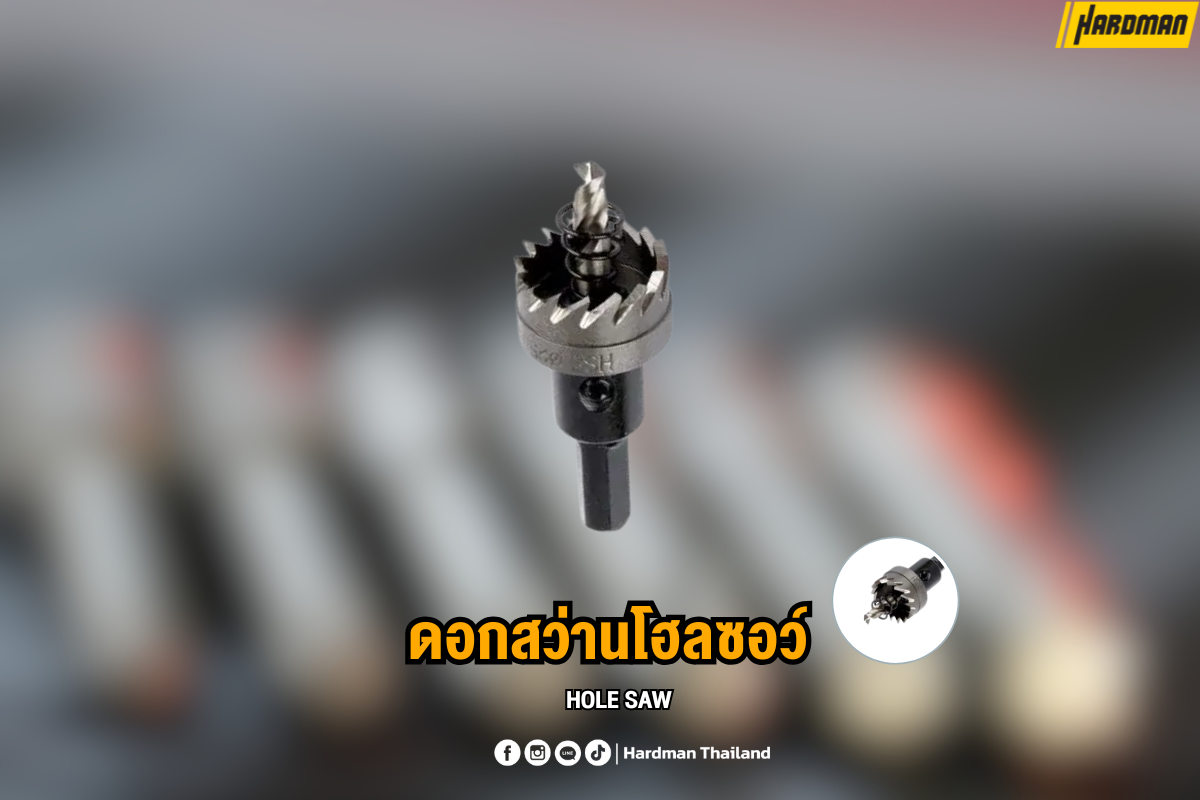
4. Hole Saw
Hole saws resemble Forstner bits with their circular base and sharp teeth around the outer edge. The spacing of these teeth varies: wider spacing helps reduce vibration for smoother drilling, lessens wear on the cutting blade, and lowers noise. It also makes it easier to clear debris, reducing clogging and heat buildup. Conversely, more closely spaced teeth provide a finer cut but might take a bit longer to drill.
In the center of the hole saw, there's a pilot bit that extends out, often with a hexagonal head and a spring. This pilot bit helps you accurately position your cut before the main saw teeth engage the material. Hole saws can be used on various materials including metal, wood, plastic, and concrete.
They're ideal for making large holes, such as those needed for electrical wiring pathways or installing wooden door locks. It's crucial to select the right size hole saw for the material you're working with, as a bit that's too small won't be effective on hard or thick materials.
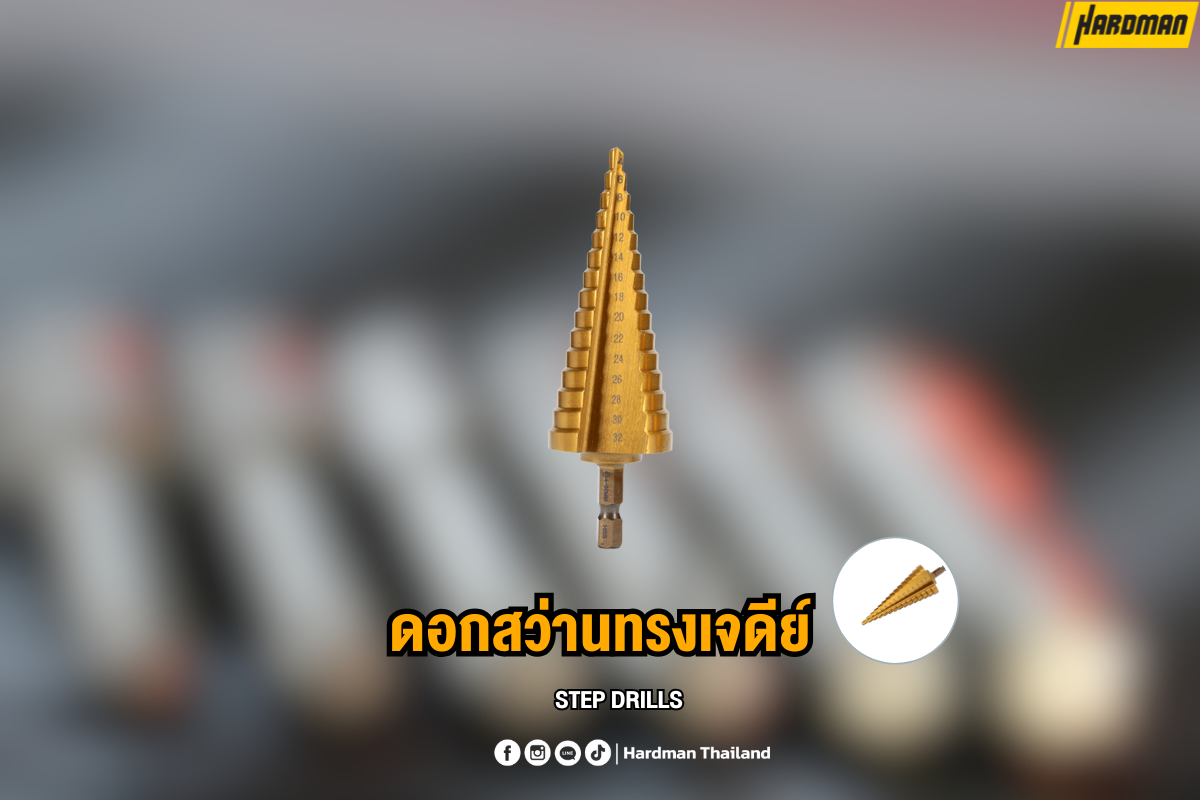
5. Step Drill Bits
Step drill bits are cone-shaped, tiered bits that can bore holes in materials like metal, wood, and plastic, provided they aren't too thick. The stepped design allows material chips to exit easily along the flutes, reducing dust buildup and preventing clogging in the workpiece or drilling equipment. This design also ensures that the holes you create are precisely the desired size, as each step on the bit is marked with its corresponding diameter.
These bits are ideal for drilling large holes, such as for shelving, backdrops, or installing exposed electrical conduits and pipes.
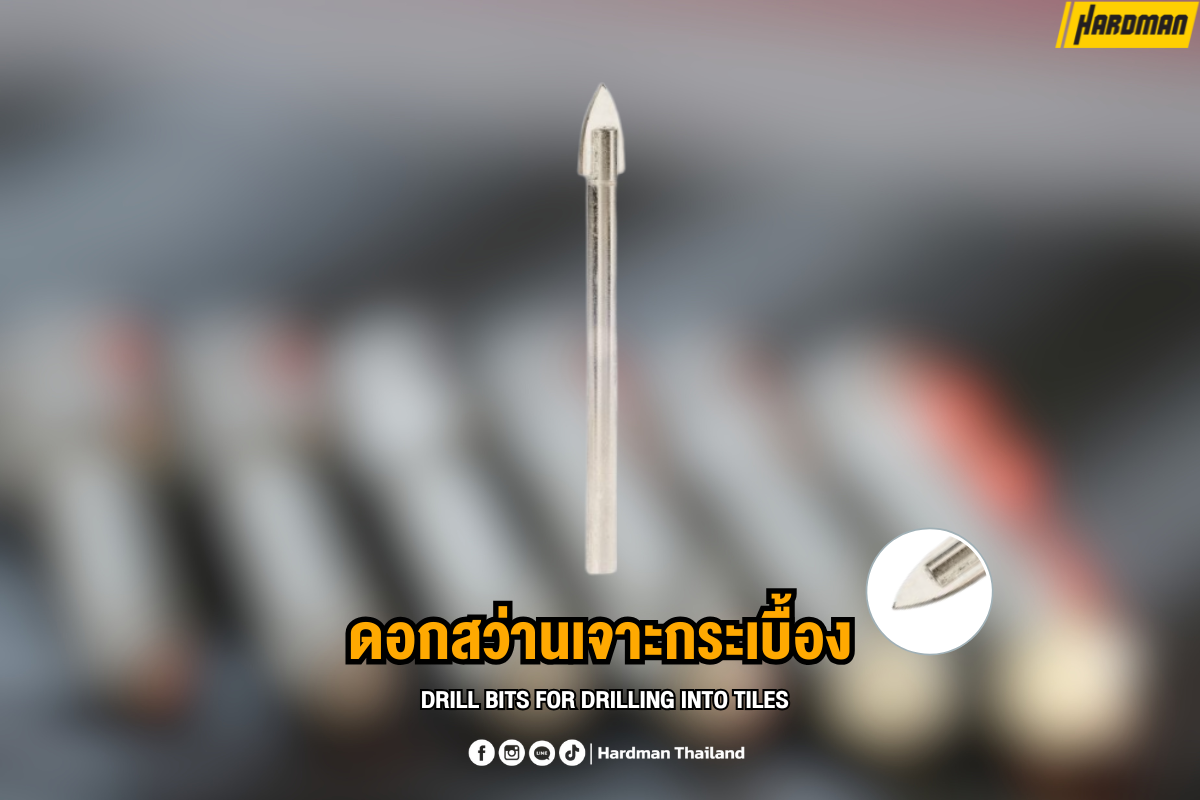
6. Drill Bits for Drilling into Tiles
Drill bits for drilling into tiles have a sharp, spade-like tip designed for precise placement on your marked drilling spot.
These bits are ideal for making holes in ceramic tiles, porcelain, and stone to embed screws or nuts and install various fixtures. When using them, it's crucial to lubricate the drilling area or the drill bit with water. This significantly reduces friction and lowers heat buildup. However, for some applications, these bits might need to be used in conjunction with other types of drill bits.
How to Identify Each Type of Drill Bit
Each type of drill bit is designed for specific materials and tasks. Let's look at the distinguishing characteristics of popular drill bits you should observe
These drill bits are specifically for woodworking, ensuring clean and precise holes.
How to identify them:
- Brad Point: This is the most crucial distinguishing feature. Most wood drill bits have a small, sharp point extending from the center of the tip, similar to a pencil lead. This helps to accurately position the drill bit and prevents it from slipping.
- Cutting Edges: They have two very sharp cutting edges, resembling small blades, which cut and bore through wood fibers, resulting in smooth, tear-free holes.
- Flutes: The spiral grooves on these drill bits are typically wider and deeper than those on metal drill bits. This design efficiently helps in ejecting sawdust and wood chips.
2. Metal Drill Bits
These are the most common and versatile drill bits you'll find, used for drilling metal and plastic.
How to identify them:
- Sharp, Pointed Tip Without a Brad Point: The tip of these drill bits is ground to a sharp cutting angle (typically 118° or 135°), but it lacks the protruding brad point seen on wood drill bits.
- Twist Flutes: They feature spiral flutes running along the entire length of the bit, from shank to tip. These flutes are generally tighter and narrower than those on wood drill bits.
Material and Coating:
- HSS (High-Speed Steel): Appears as a shiny silver color, similar to regular steel. This is the basic type.
- Titanium Coated: Has a shiny gold color due to a Titanium Nitride (TiN) coating, which increases hardness and reduces friction.
- Cobalt: Often has a dark brown or copper tint. These bits offer superior heat resistance compared to HSS, making them ideal for drilling tough metals like stainless steel.
3. Concrete Drill Bits
These are the go-to drill bits for construction work and masonry walls.
How to identify them:
- Tungsten Carbide Tip: This is their most crucial distinguishing feature. Concrete drill bits have a thick, robust carbide plate brazed to the tip, resembling an arrowhead or spearhead. This design allows them to withstand the intense impact and pulverizing action required for hard materials.
- SDS Shank (for Rotary Hammers): If the drill bit is designed for heavy-duty rotary hammer drills, the shank (the part that goes into the drill chuck) will have distinct U-shaped or round grooves. These grooves allow the bit to move slightly back and forth during hammer drilling, enhancing its impact action.
- Flutes: The spiral grooves along the body of the drill bit are deeper and wider than those on metal drill bits. This design efficiently helps in ejecting fine concrete dust and debris.
4. Hole Saw
The hole saw isn't a twisting drill bit; it's a sharp ring designed for cutting large circular holes.
How to identify it:
- Cylindrical Shape and Saw Teeth: It looks like a hollow cylinder with sharp saw teeth around its edge, similar to a crown.
- Pilot Bit: In the center of the hole saw, there's a small pilot bit that extends out. This bit helps to pinpoint the drilling location and keeps the hole saw stable when you start drilling.
- Material: Hole saws come in various types for different materials. For example, carbon steel is for wood or plastic, bimetal is for metal or wood, and carbide/diamond (look at the tooth type) is for tiles or concrete.
5. Step Drill Bits
Step drill bits are versatile drill bits designed for drilling various hole sizes in sheet materials.
How to identify them:
- Conical or Pagoda Shape: They feature a cone or pagoda-like shape with distinct steps. Each step represents a different hole diameter you can drill.
- Flutes: They have flutes similar to regular drill bits, but these are located on the surface of each step.
- Material: They're typically made from HSS (High-Speed Steel) or HSS Cobalt, often with surface coatings for increased durability.
- Usage: They are ideal for drilling various hole sizes in relatively thin sheet materials such as thin metal, plastic, acrylic, or thin wood, without needing to frequently change bits, which speeds up your work.
6. Drill Bits for Drilling into Tiles
These are specialized drill bits for fragile materials like tiles and glass.
How to identify them:
- Spear Point Tip: This is their unique characteristic. The tip of the drill bit is sharp and shaped like a spearhead or arrowhead. It's usually made from high-quality carbide or, for some types, a diamond-coated tip, designed for abrasive grinding through the material.
- No Distinct Spiral Cutting Edges: They lack the sharp, twisted flutes found on general drill bits because their function is to grind, not to cut.
- Simple Shank: The shank of the drill bit is relatively smooth, without deep flutes, as the debris produced is minimal and consists of fine powder.
Recommended Complete Drill Bit Sets for All Drilling Tasks
Choosing the right drill bit is essential because each type is designed for different materials, whether it's wood, metal, concrete, tiles, or composite materials. Today, we've compiled a list of popular drill bit sets from leading brands that cover a wide range of needs.
1. INGCO AKD2052 SDS PLUS 5 Pieces
 |
Ideal for: Drilling into concrete, masonry, and brick.
Highlights:
- SDS PLUS system ensures a secure lock with rotary hammer drills.
- Made from high-quality steel.
- Durable and drills quickly.
2. MAKITA B-44884 21-Piece Drill Bit Set
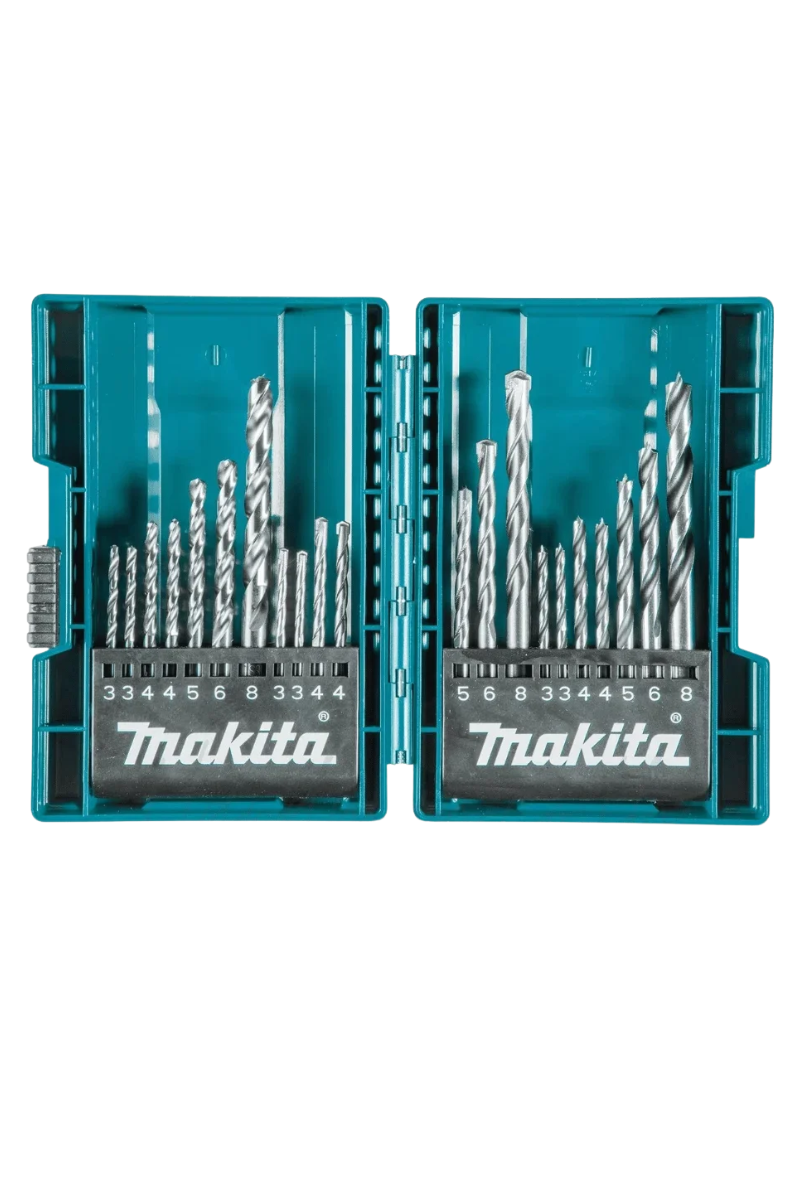 |
Ideal for: DIY projects and general handyman tasks.
Highlights:
- Covers drilling into wood, metal, and masonry.
- Wide range of sizes for versatile use.
- Comes in a well-organized case for convenient portability.
Best suited for: Beginners or tradespeople who need a diverse set of drill bits all in one package.
3. MAKITA D-16405 9-Piece Drill Bit Set
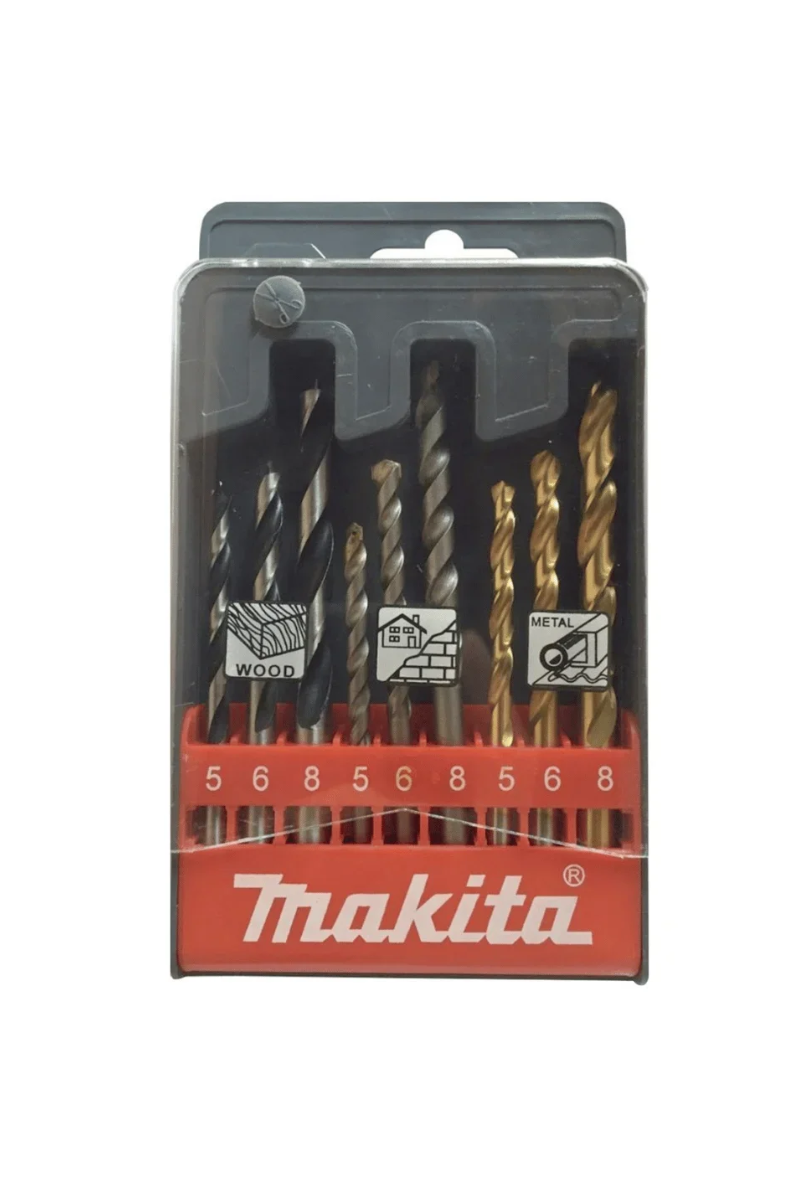 |
Ideal for: Drilling wood, masonry, and metal.
Highlights:
- Well-curated set with frequently used sizes.
- Great value for general household tasks.
- Durable case for easy access and storage.
Best suited for: Beginners in power tools or anyone looking for a compact yet comprehensive set that's ready to use right away.
4. BOSCH Hex-9 MultiConstruction Multi-Purpose Drill Bit
Ideal for: Drilling into mixed materials like wood, masonry, and tiles.
Highlights:- One bit drills multiple materials.
- Features a special carbide tip for extreme strength.
- Reduces vibration for smooth operation.
5. STANLEY STA50074B10 HSS Metal Drill Bit, 5.5 mm (7/32 inch)
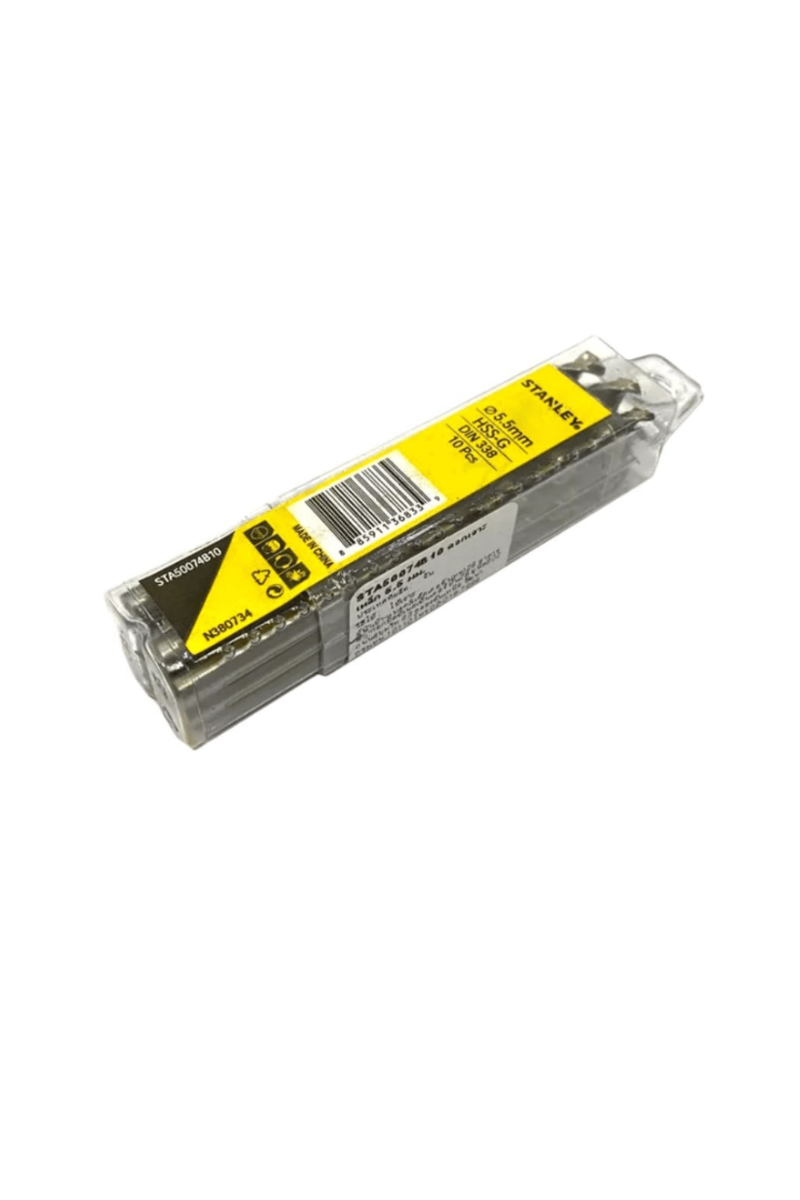 |
Ideal for: Drilling into metal and steel sheets.
- Made from High-Speed Steel (HSS).
- Provides smooth, precise drilling with durable sharpness.
- 5.5 mm size is frequently used for general installation tasks.
Best suited for: Metalworking that requires precision and a clean finish, or interior decoration projects involving steel frames.
6. MAKITA D-71962 9-Piece Wood, Masonry, and Metal Drill Bit Set
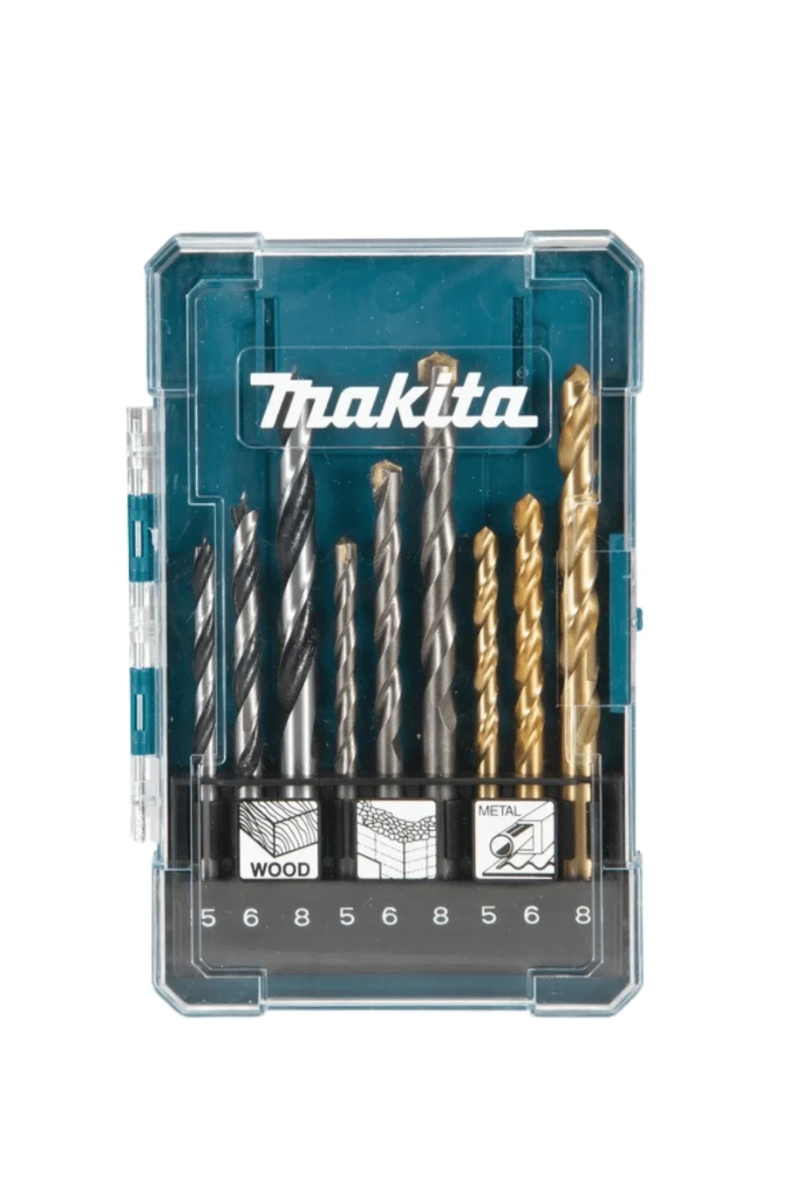 |
Ideal for: Multi-purpose household tasks and general handyman work.
Highlights:- Covers basic drilling tasks.
- Suitable for general to intermediate users.
- High quality according to Makita standards.
Best suited for: General users or for home repairs; it's a single set that handles all surfaces.
7. BOSCH EXPERT HEX-9 Tile Drill Bit Set, 5x80 mm (5 pcs/pack) #2608900598
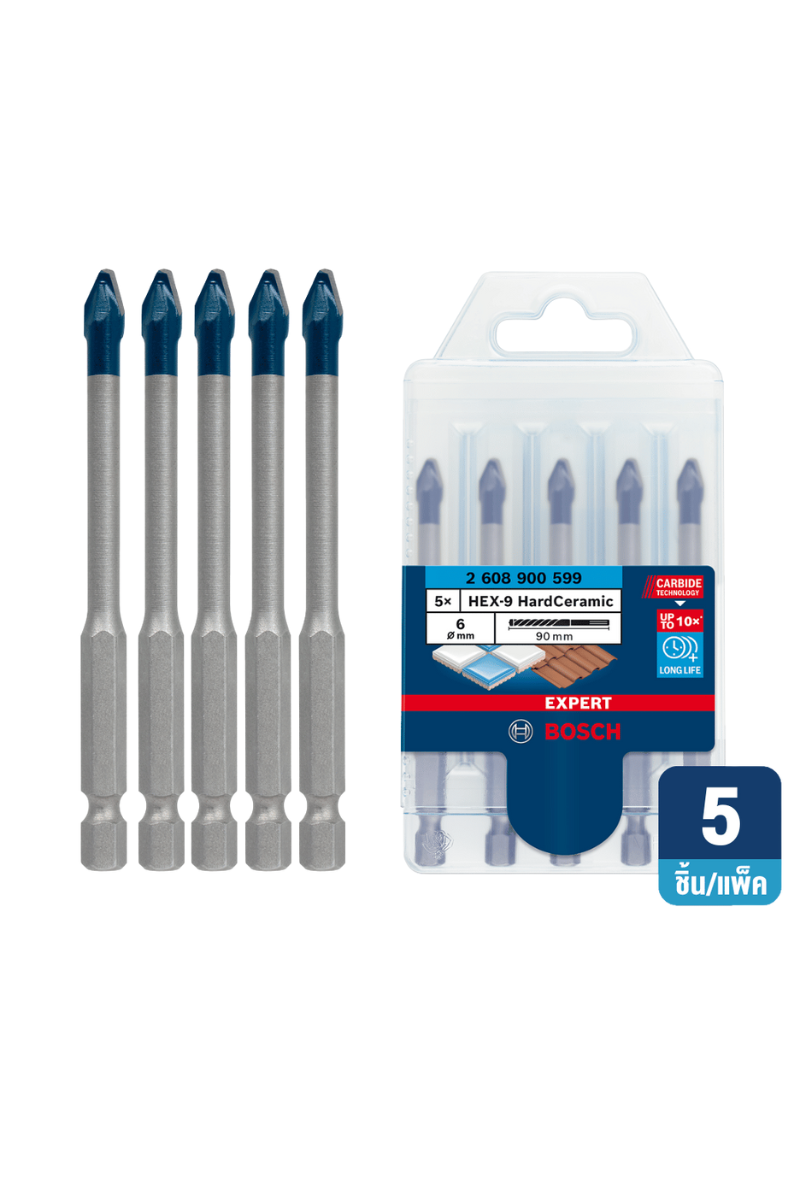 |
Highlights:
- Special sharp tip prevents tiles from cracking.
- Hexagonal shank ensures a secure grip in the drill chuck.
- High precision.
Best suited for: Interior decorators or home renovators.
8. EMTOP ECDB01601 16-Piece Drill Bit Set
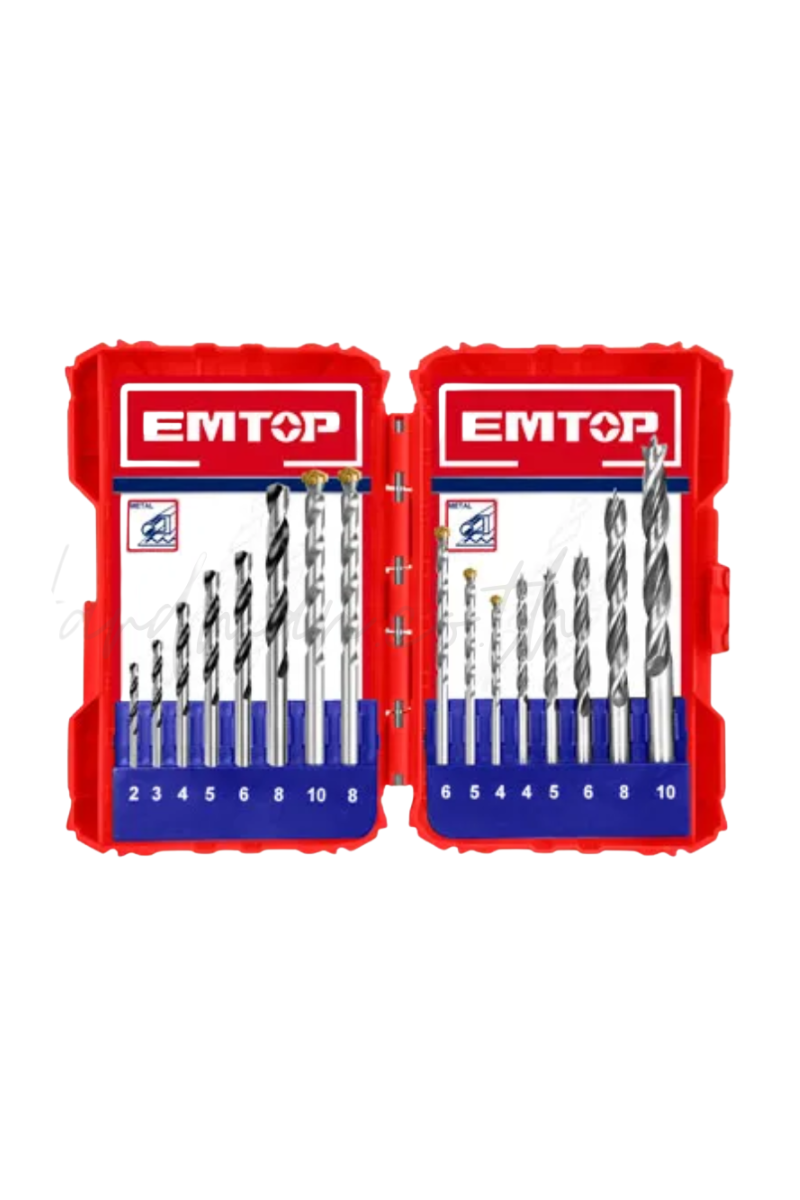 |
Ideal for: General handyman tasks.
Highlights:- Variety of sizes for comprehensive use.
- Modern storage case for easy portability.
- Great value for the price.
Best suited for: Anyone looking for a cost-effective set for use both at home or on a job site.
9. EMTOP ESDL2061 6-Piece Step Drill Bit Set
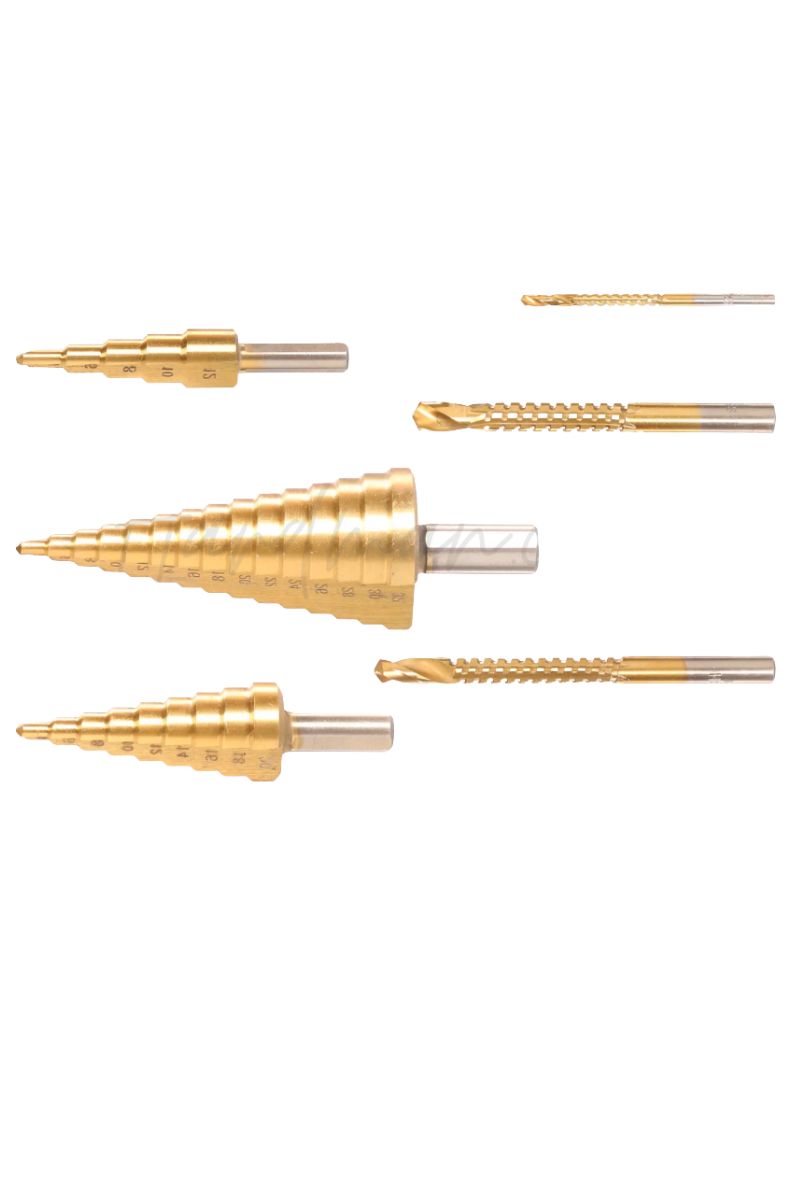 |
Ideal for: Drilling and enlarging holes in metal, galvanized sheets, and plastic sheets.
Highlights:- Stepped, pagoda shape means no need to frequently change bits.
- Easy to use and saves time.
- Strong with durable sharpness.
Best suited for: Electricians and metalworkers; a must-have tool.
10. EMTOP ETDBB11196 HSS Metal Drill Bit Set
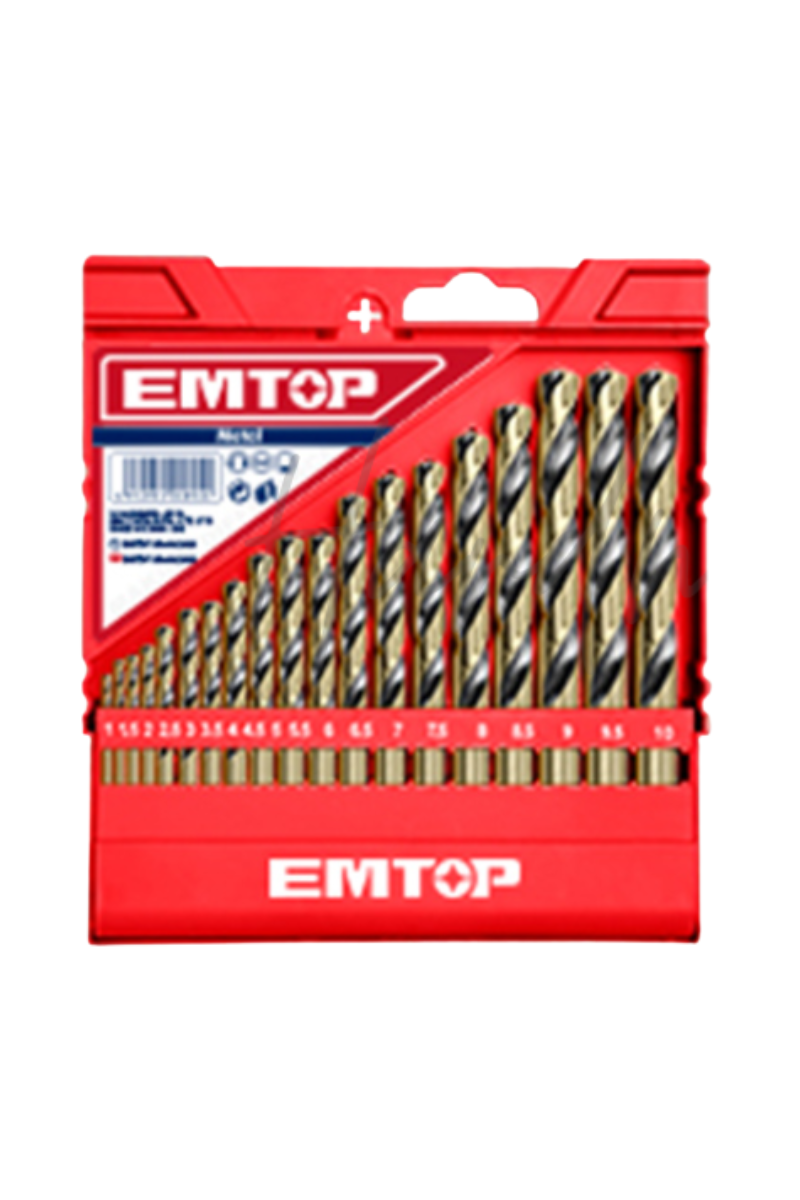 |
Ideal for: Metalworking specifically.
Highlights:- Strong and very sharp bits for smooth drilling.
- Multiple sizes available in the set.
- Can be used with both corded and cordless drills.
Best suited for: Metalworkers or those looking for a great value option for all types of metal tasks.
Summary: Choose the Right Bit for the Job for the Best Results
Understanding and observing the differences between drill bit types is extremely important. It doesn't just help your work go smoothly, but also extends the lifespan of both your drill bits and your drill itself. If you choose the correct drill bit for the material you're drilling, you'll find your task becomes incredibly easy.
Where to Purchase or Inquire About Products
For more information or to order products, visit Hardman, your comprehensive tool center, at Rama 3. Alternatively, you can send a message to their Facebook page inbox. Their team is ready to respond quickly and offers nationwide delivery!
Source of Information
https://www.thaiwatsadu.com/th/articles/Choosing-drill-bit


